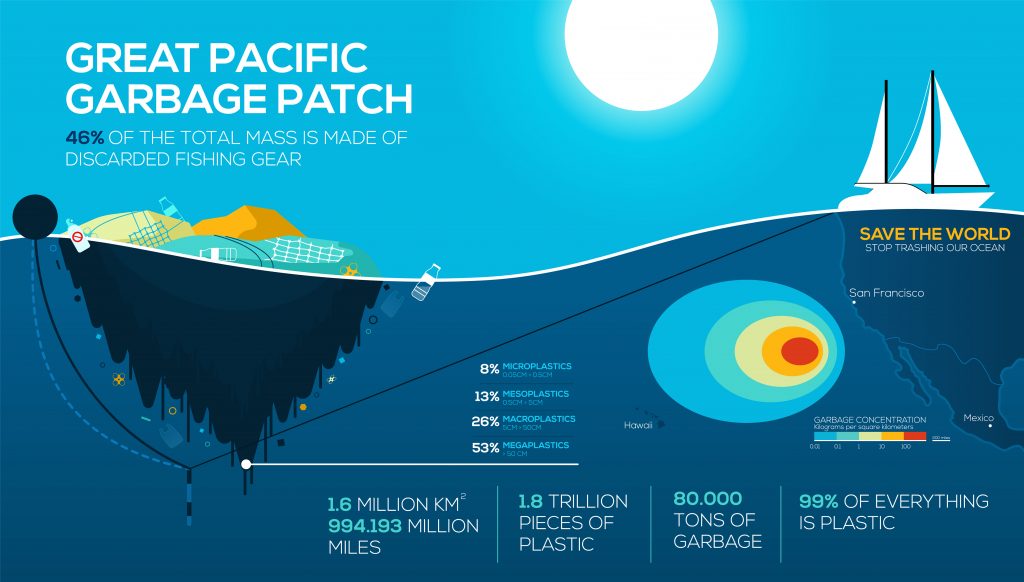The Great Pacific Garbage Patch – Twice the Size of France and Growing
The Pacific Ocean is beautiful. However, halfway between California and Hawaii, the ocean is also the site of the Great Pacific Garbage Patch. At over 600,000 miles, it is more than twice the size of France. The detritus already weighs around 87,000 tons and is growing by the day. Bottles, bags, fishing nets, and such items comprise the huge garbage dump. The patch is made up of around 1.8 trillion pieces of trash.
If not removed, this garbage patch will only grow and soon acquire unmanageable proportions. We have been using plastic only since the 1950s. We don’t really know how long this plastic will take to degrade. It could take years or even centuries.
This patch has been around since the mid-1980s. This huge swirl of plastic waste is of particular concern to Hawaii. It is humongous, larger than France, Germany, and Spain put together. Floating garbage is extremely harmful to the marine ecosystem off the coast of Hawaii. Turtles, dolphins, sharks, whales, porpoises, snakes, and different species of fish get entangled and killed because of this plastic waste spread over the Pacific. Filter feeders like oysters and mussels consume microscopic particles of plastic, and this affects the overall health of the species. Humans that consume marine animals that have fed on micro-plastic are at risk from different ailments.
Such garbage patches can also be found in the Atlantic and Indian Ocean. Unrestrained use of disposable and single use plastic items is the biggest cause of such huge amounts of plastic waste being generated.
Holland based non-profit organization “Ocean Cleanup” is putting in place a plan to remove the patch. The idea is to use huge floating nets that will track even small pieces of plastic and will keep the debris in one place till ships arrive to carry it away. Depending upon the success of trials, Ocean Cleanup opines that it could eliminate the Great Pacific Garbage Patch in less than a decade.
Eliminating existing garbage heaps from oceans is only half the job. Each day, tons of plastic refuse finds its way into our oceans. We need to find a way to stop this, or at the very least minimize the inflow of garbage in our oceans. Recycling plastic is a great idea. An even better idea is to reuse items that are made from plastic, metal, and such non-biodegradable materials.
Scientists feel that technology can at best provide a stopgap solution. Ultimately, we can save the environment, our oceans, and indeed the Earth only by bringing about behavioral change.

